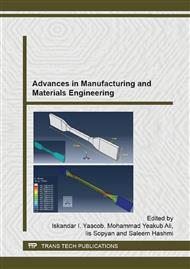p.476
p.480
p.484
p.488
p.494
p.499
p.503
p.509
p.513
Remote Interior Temperature Control of Parked Vehicles
Abstract:
Rise of interior temperature during daytime for a fully locked and parked car is a problem that needs to be addressed. The main reason for this significant rise in interior temperature is the heat that is trapped inside because of the closed glass window and greenhouse effect. This situation is very uncomfortable to get into the car that is exposed to sunlight for a prolonged period especially for toddlers and pets. Several measures have been proposed and some of them implemented to counter this issue. An example would be leaving the windows partially open when the car is parked to let air flow. More modern approach includes installing an external ventilation unit like a blower to regulate the internal temperature. However, none of these solutions are reliable and beneficent and moreover at times leave serious security loopholes apart from other typical drawbacks like power inefficiency and high cost. As such, there was an immense requirement to come up with a ‘smart and reliable’ solution for this issue keeping in mind factors like cost, power efficiency, user friendliness and reliability. A smart system was thus developed which gave a comprehensive control over the cooling system of the vehicle from a remote area. Moreover, other customizable necessary features like window control, safety and security has also been included. The device has been tested successfully on a Perudua Kalisa. Results obtained from the experiment shows interior temperature of the car can be brought to a comfortable range of 27-28o C within 15 minutes by implementing this device.
Info:
Periodical:
Pages:
494-498
Citation:
Online since:
July 2015
Keywords:
Price:
Сopyright:
© 2015 Trans Tech Publications Ltd. All Rights Reserved
Share:
Citation:


